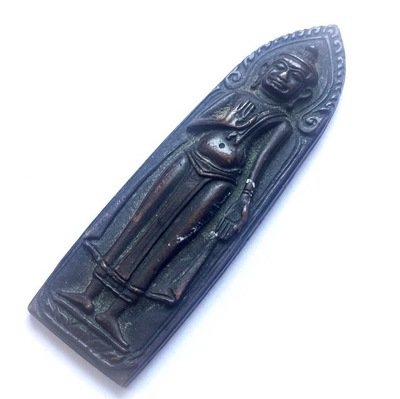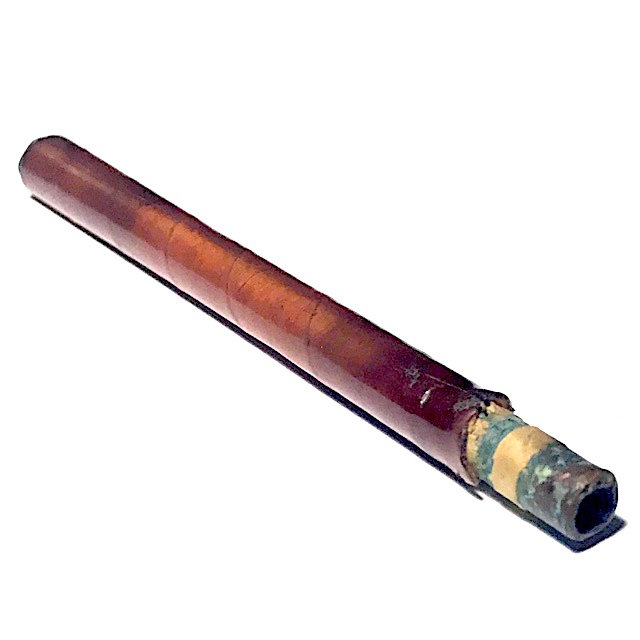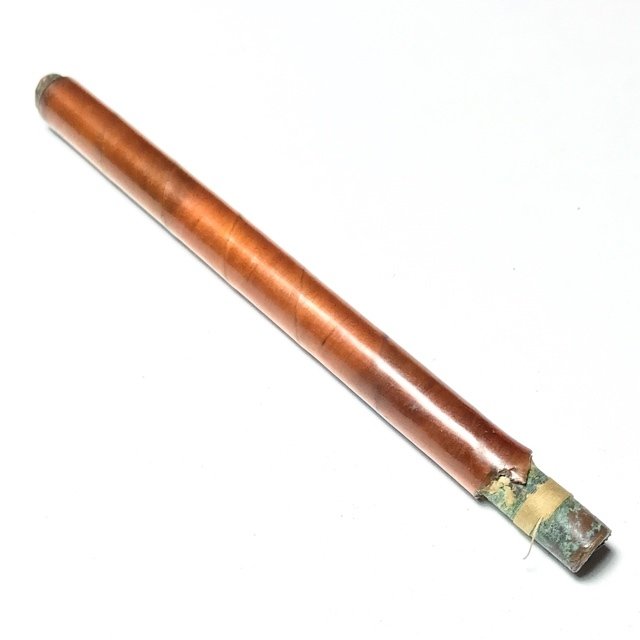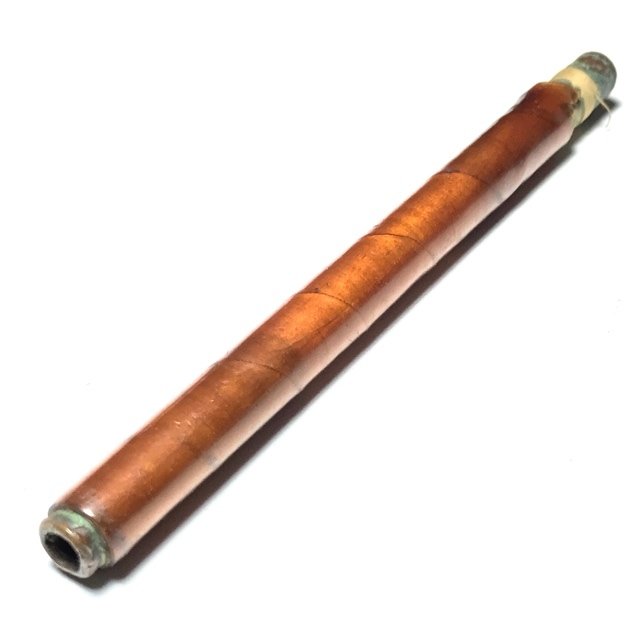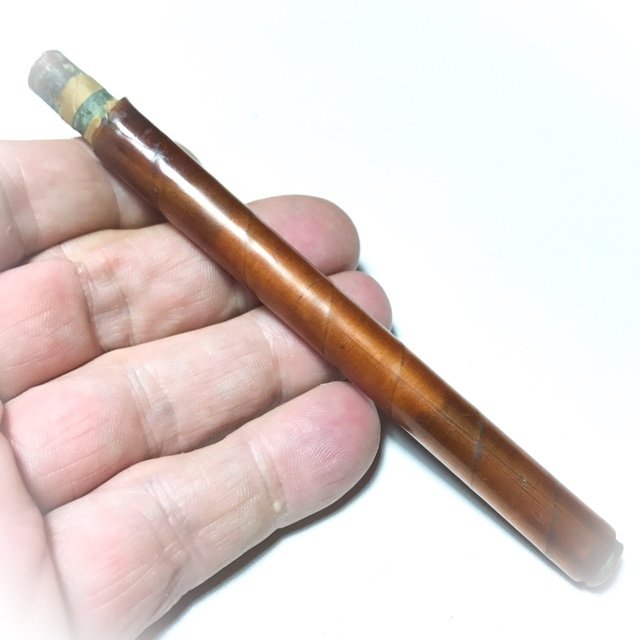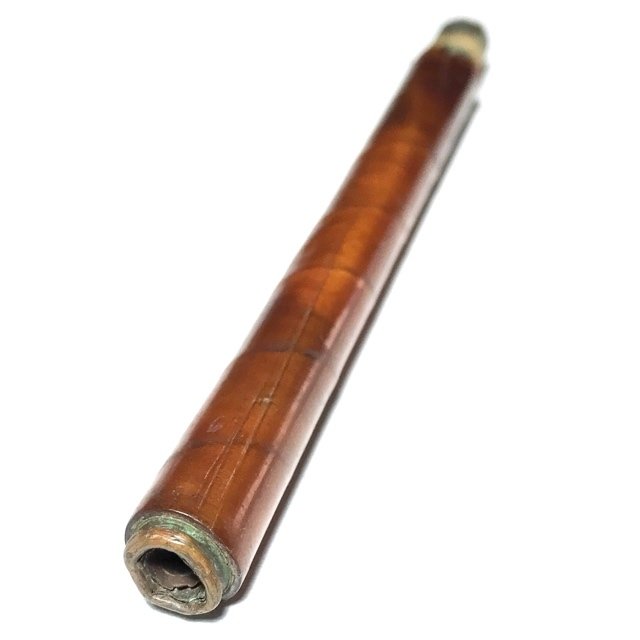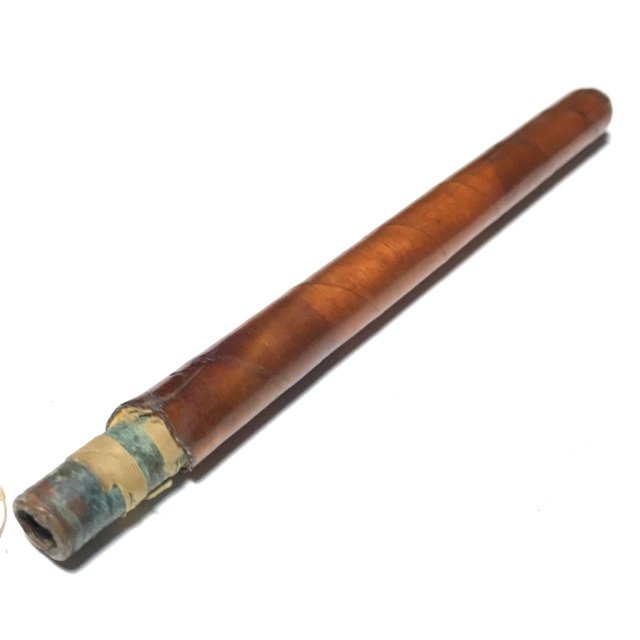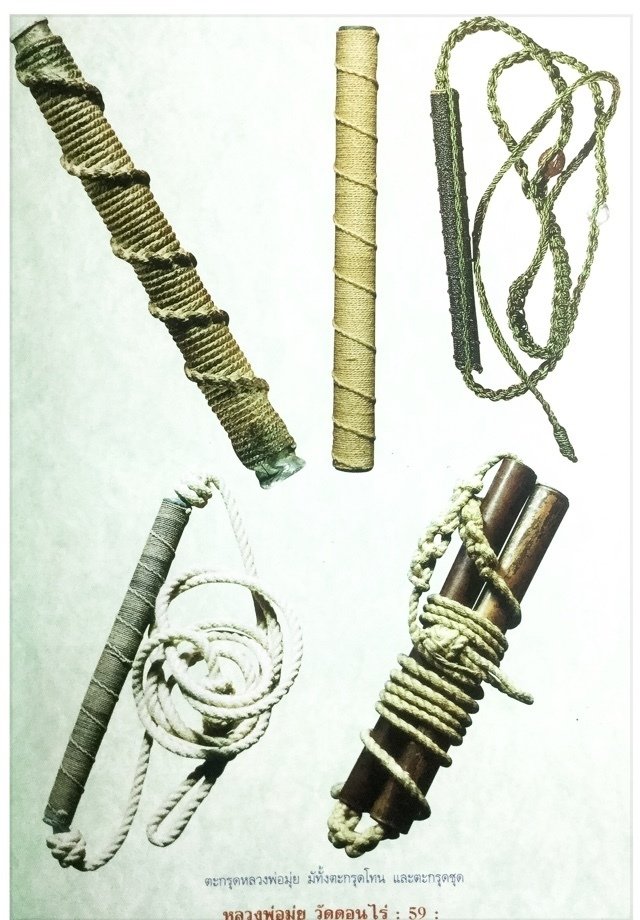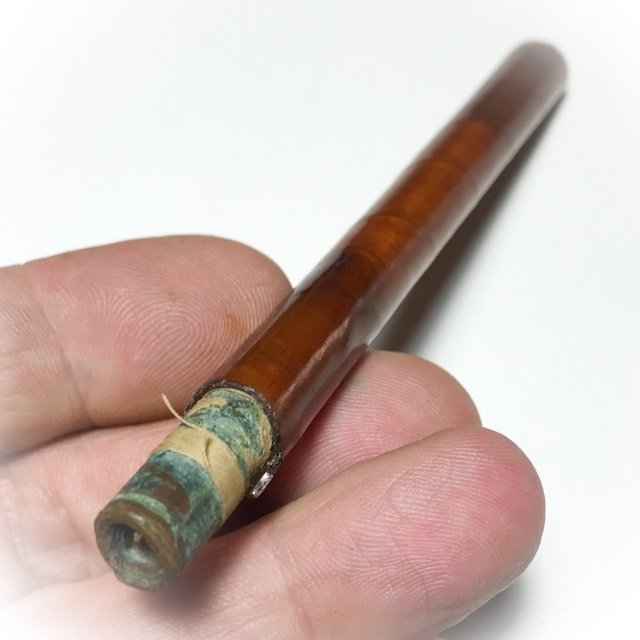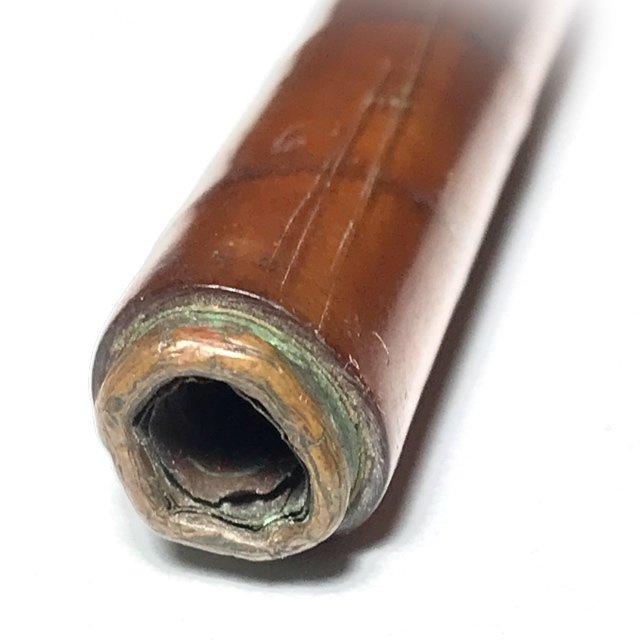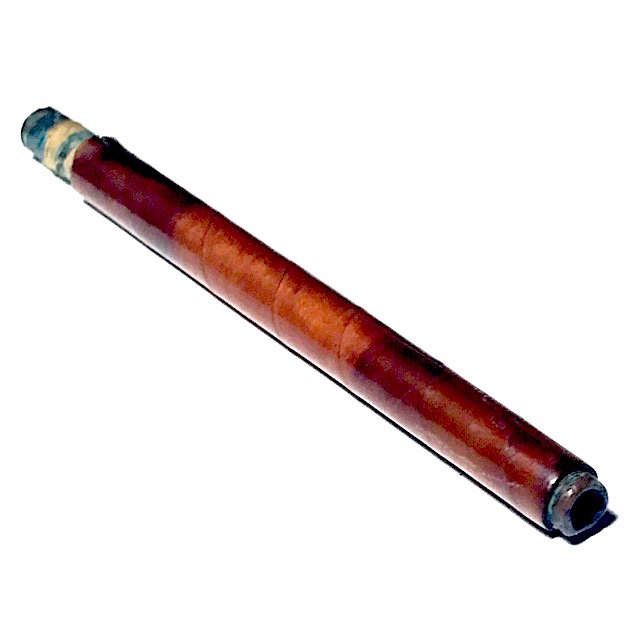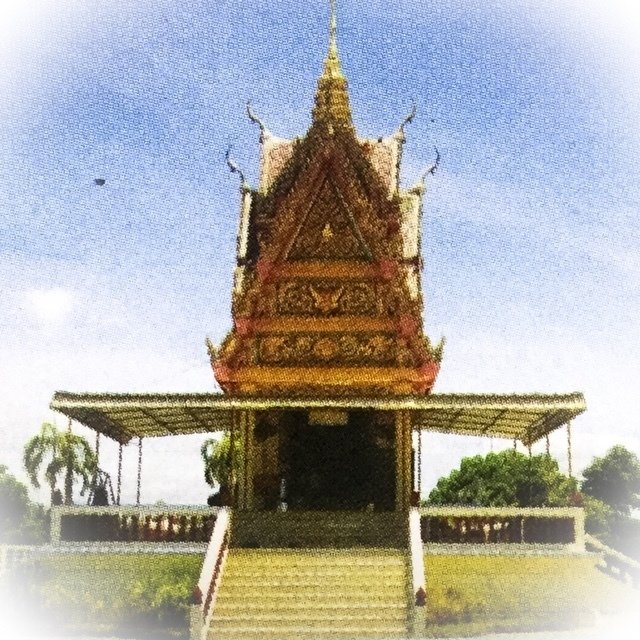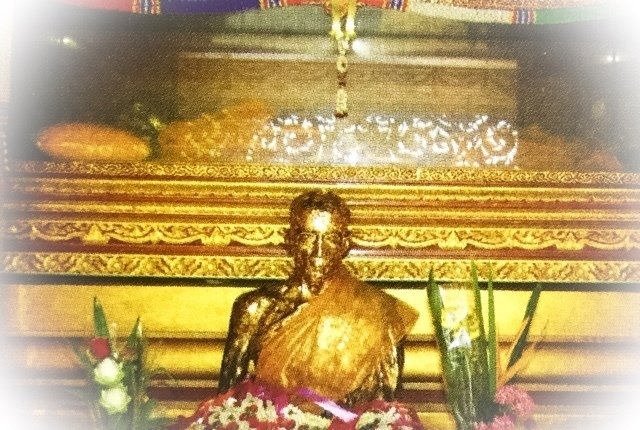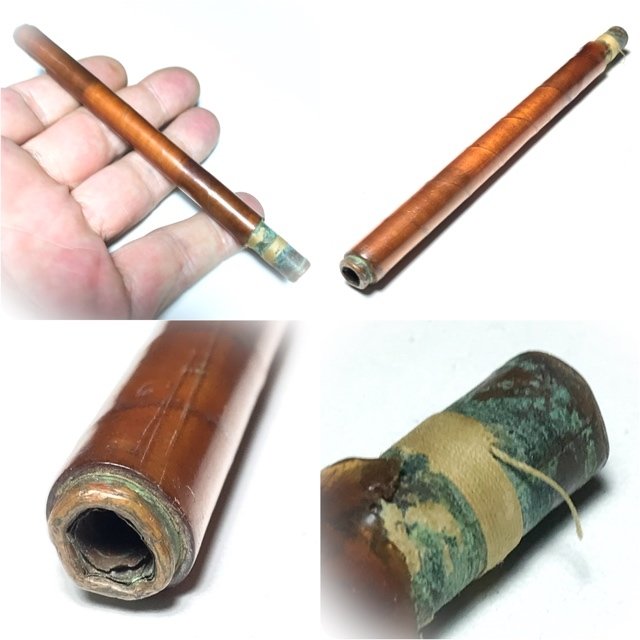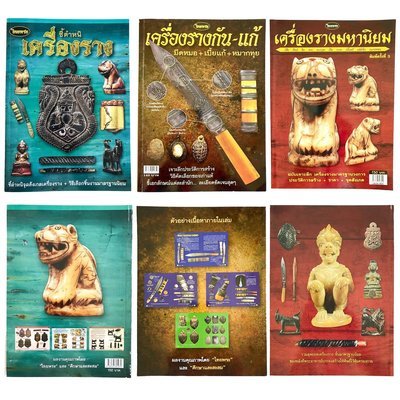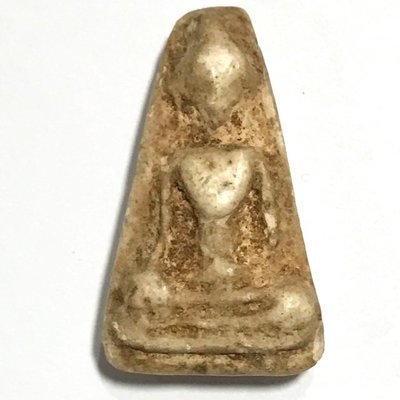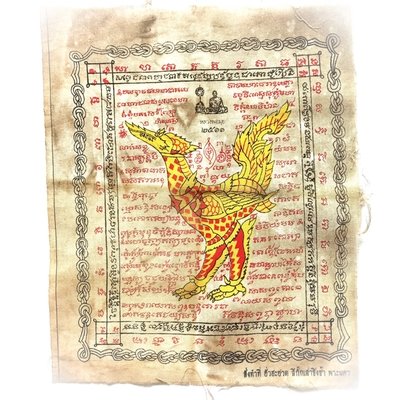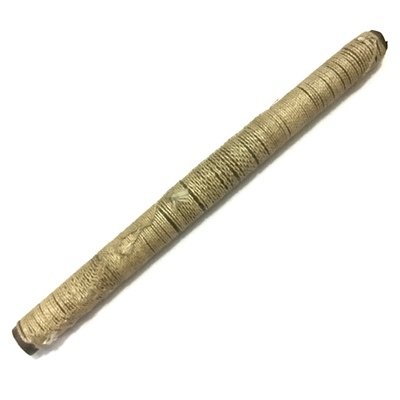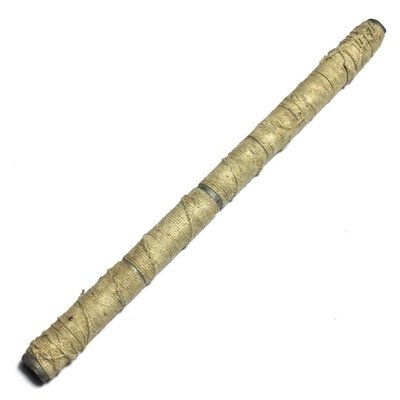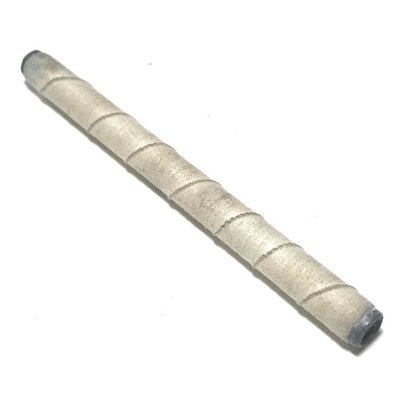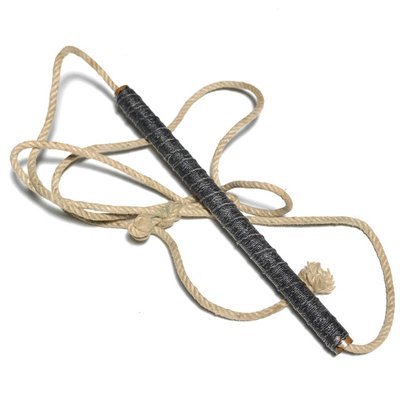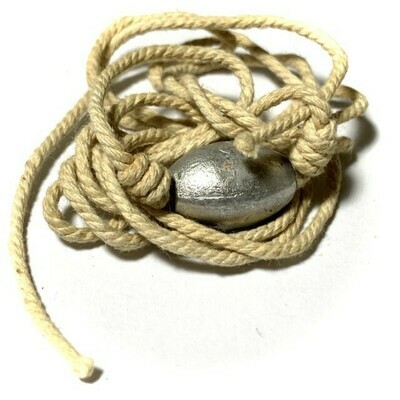Presenting a tiny but powerful and rare classic amulet from one of the Great Khao Or Masters of the 20th Century, Rian Glom Lek Hlang Chedi 2505 BE Nuea Tong Daeng Miniature Guru Monk Coin Por Tan Klai Wajasit
This Sacred amulet of the Great Khao Or Master of Nakorn Sri Tammarat, Master of Wat San Khan and Wat Pratat Noi, is a very rare amulet from Por Tan Klai’s 2505 BE Blessing Ceremony Edition, and is considered a ‘Jaek mae Krua’ type amulet (meaning ‘give to the kitchen maids and temple helpers’), which is suitable not only for men, but due to its miniature size, a perfect amulet for ladies or children to wear.

Rian Glom Lek 2505 BE Por Tan Klai Wajasit Wat Suan Khan
The 2505 BE edition of amulets of Por Tan Klai, is a highly preferred edition, which saw his famous ‘Rian Glom’ round Monk coin amulet with Chakra released, The Rian Glom Lek Hlang Chedi, and the Roop Tai Por Tan Klai Guru Monk Blesséd Photographamulets such as look om chan hmak and ya sen tobacco balls, and sacred powder amulets of various models.
A very rare and highly prized amulet for the devotees of Por Tan Klai to associate with his image and pray to him with a blessed image of the Guru, and the Chedi Relic Stupa on rear face for Buddhanussati and Marananussati. A powerful and Sacred amulet which has passed through the hands of the Guru and been blessed by him.
Por Tan Klai was one of the Top Guru Master Monks of the Last Century, and is considered one of the Four Great Masters of the Previous Generation of Lineage Masters of the Khao Or Southern Sorcery Lineage.
Kata Bucha Por Tan Klai
Takrut Tone Nuea Tong Daeng Early Era Amulet 5 Inches Luang Por Mui Wat Don Rai
Early Era Takrut Tone Nuea Tong Daeng Copper Yantra foil scroll spell for Protection, Evasion of deadly Accidents, Status Increase and Wealth Attraction, from the Great Luang Por Mui, of Wat Don Rai, in Supanburi, for Powerful Kong Grapan Chadtri Invincibility, Klaew Klaad Protection from dangers through Evasion, Maha Ud Gunstopper Magic, Serm Yos Promotion of Status, and Maha Amnaj Commanding Power over others. This Takrut has been covered in transparent plastic hose at some point by a devotee in the past, and has a portion missing from one end, through years of use. This reveals the cord-bound Takrut within the hose, which allows close perusal of the scroll, and makes it easy to identify as the work of Luang Por Mui.
Depending on whether you are a purist and wish to keep the Takrut in its original state, and continue its life story as is, or have us re-encase it in Stainless Steel Casing (transparent tube steel caps), or Waterproof Casing, we will fulfil your wishes according to your personal tastes and reasoning as a devotee/collector. The various options of encasement/non-encasement are provided.
The Takrut of Luang Por Mui are famous for Klaew Klaad Kong Grapan Chadtri Maha Ud and Pokasap Power, and are eminent and world famous members of the Tamniab Pra Niyom of the Samakom Pra Krueang Thai, in the category of Krueang Rang Talismanic Charms, and the Category of Nontaburi Master Monk amulets.
The Takrut was hand inscribed with full ritual process, as was the practice in those days, and is famously powerful for both protection against physical harm and Black Magic, Ghosts and Curses, and evasion of deadly dangers, as well as being a powerful spell to use for Mercy Charm and good business.
Takrut are amongst Luang Por Mui's most popular amulets from his large repository of Wicha, and are very rare to encounter in the present day and age. His amulets are highly regarded for their miraculous power to protect, and ability to attract prosperity.
One can easily say that the Takrut of Luang Por Mui are an all time Classic Pra Niyom amulet of great fame and esteem, that most fans of ancient amulets will have heard of them more than once. it is not possible to spend years studying, loving and collecting amulets withough encountering mention of Luang Por Mui. In short, the amulets of Luang Por Mui are extremely well known amulets, that are very rare to find, but very much desired.
Luang Por Mui Putta Ragkhidto, of Wat Don Rai was the third abbot of the temple, and the first one to take true responsibility, and develop the temple to become the great temple it has come to be known as in the Present Times.
The temple of Wat Don Rai was built by the local folk with the generosity of Mr See, Mrs. Poon, Mr Gaew and Mrs. Hmorn, who were the owners of the land where the temple was built. Once the temple was built in its basic functional state, the folk invited Pra Ajarn Plang to come and stay and administrate the temple.
Pra Ajarn Plang stayed for a period of only one year, and then moved to stay somewhere else. In the year 2458 BE, the folk then asked Pra Ajarn Ploy to come and be the new abbot in his stead. Pra Ajarn Ploy remained at the temple for 5 years, but then decided to disrobe and re-enter the lay community. So the temple of Wat Don Rai found itself without an Abbot for the second time.
The temple remained empty for three years, until the year 2466 BE, when the local Buddhist folk begged Luang Por Mui to come and stay and tend to the needs of the temple. Since then, Luang Por Mui remained at Wat Don Rai, and performed many great works of restoration and development of the temple facilities. He worked constantly, never complaining when tired, continuing to build and develop the temple, converting a small regional temple into the large one of National Fame, Status and Importance it is today.
Below, some of the officially recognised and accepted 'Niyom' Preferred category of Takrut amulets from the Pantheon of Luang Por Mui.
Pra Kroo Suwanawutajarn, or 'Luang Por Mui, was born as one of 5 siblings, and given the name 'Chueam', but later changed his Name to 'Mui'. His Surname was 'Mee Sri Chai'. He was born on Thursday 5th December 2432 BE. His father's name was Mr. Muean, and his Mother's name was Mrs. Chang. His family were farmers.
Luang Por Mui spent his childhood much as many farmer's child would do, and lived a normal life, until he came of age and finished his national military service. After he has served his country with the military service, he then was ordained as a Bikkhu into the Buddha Sasana, as is traditional for all Male Buddhist children in Thailand to ordain at least for a while. Luang Por Mui actually ordained twice in his lifetime, with the first time remaining ordained for a period of 10 years (exact date of ordination unknown).
But after Luang Por Mui had disrobed, he became seriously ill, and during the illness made a Vow, that if the illness would disappear, he promised to Ordain again and devote his whole life to the Buddha-Dhamma. When the illness then faded and disappeared, he changed his name officially from 'Chueam' to 'Mui' at the same time. Luang Por then kept his promise, and sought Ordination for the second time. This time there would be no more disrobing.
The second time he ordained is recorded as having occurred at Wat Don Bupharam in Supanburi with Pra Kroo Tammasarn Raksa (Luang Por An) as his Upachaya (Ordaining Officer), and Pra Ajarn Huan, from Wat Bang Krang as his Pra Gammawājājarn (Prompting Officer). Pra Ajarn Gun was his Pra Anusāwanājarn (witness) to the Ordination.
Luang Por Mui received the Dhamma Name of 'Putta Ragkhidto'. Luang Por Mui was known to have a very diligent personality, and in line with this, he began to study the many Wicha and master the Sacred Khom Sanskrit Agkhara Inscriptions. He studied Wicha Akom Dtamra Saiyasart Sorcery with a number of the great Masters of the time.
Below, Luang Por Mui Putta Ragkhidto with some of the famous amulets of the grand pantheon of amulets which Luang Por Mui created during his lifetime, which are renowned for their Klaew Klaad Kong Grapan Chadtri and Metta Maha Niyom power.
His various Masters and Kroo Ba Ajarn included both Ordained Monks, and Lay Masters, which included amongst others; Luang Phu Sukh ( Wat Pak Klong Makham Tao), Luang Por Im (Wat Hua Khao), Luang Por An (Wat Don Bupharam), and Luang Por Bpling (Wat Wimon Pokaram). In the year 2475 BE, Luang Por Mui was officially elected as the Abbot of Wat Don Mui. In the year 2476 BE, Luang Por Mui was given the position of Bishop of Nong Sadao Parish. In 2496 BE, Luang Por Mui was given the Status of Upachaya Ordaining Officer for the region of Sam Suk Township. In the year 2502 Luang Por Mui was given the Honorary Title of Pra Kroo Sanyabadtr, and his name was changed in accordance to become 'Pra Kroo Suwannawutājarn'.
Luang Por Mui was a 'Pra Samatha' - an avid practitioner of Meditation, who sought solitude, and was very strict in his self control and practice of the Vinaya rules of Ordained Life. He was tireless in his duties to serve the Buddhist Faith, and the Devotees of his Region. Luang Por continued to perform one meritorious act after another, throughout his life in service of the Temple and Devotees of Wat Don Rai.
Luang Por spent many years wandering the forests on Tudong, until sometime around 2516 BE, he became iweaker and ill. He then decided to return to Wat Don Rai, where the Devotees received him with immense celebration to welcome the return of Luang Por Mui. Luang Por Mui then remained in his old age at the temple of Wat Don Rai, until the day of his final passing on the 15th January 2517 BE, at 07:15 am at the age of 84 years old.
Above and Below Pictures; The mausoleum of Luang Por Mui, where his mortal remains (relics) are kept inside a glass coffin for devotees to worship and ask for blessings.
